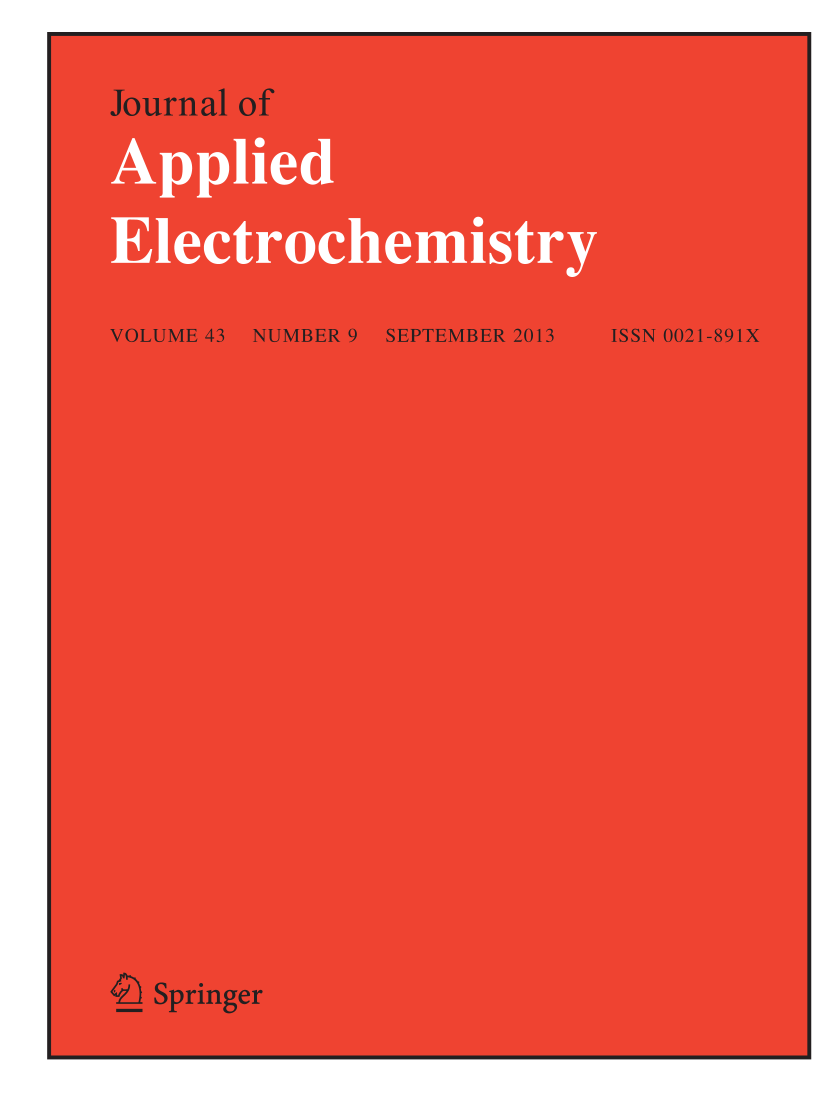聚合物凝胶对3,4-乙烯二氧噻吩原位电聚合的影响及其在不可逆电化学指标中的应用
IF 3
4区 工程技术
Q3 ELECTROCHEMISTRY
引用次数: 0
摘要
在预组装装置内部触发电聚合可以产生高对比度,视觉上不可逆的颜色变化。这种形式的电化学指示剂在广泛的商业领域有潜在的应用,包括真实性标签、医疗保健、食品包装和物流。然而,关于聚合物凝胶电解质如何影响电聚合过程的研究工作有限,聚合物凝胶电解质通常用于柔性电化学装置。本文研究了3 - 4-乙烯二氧噻吩(EDOT)在可紫外光固化的环氧乙烷-环氧丙烷-烯丙基缩水甘油醚(EO-PO-AGE)聚合物凝胶电解质中的电化学聚合。利用电位阶跃法和循环伏安法,我们发现与液体电解质相比,聚合物凝胶基质的加入使成膜所需的过电位降低了0.1 V。此外,与液体电解质的指示剂相比,聚合物凝胶电解质的指示剂显示出更高的显色效率和更大的视觉均匀性。图形抽象本文章由计算机程序翻译,如有差异,请以英文原文为准。
Influence of a polymeric gel on the in situ electropolymerization of 3,4-ethylenedioxythiophene and application in irreversible electrochemical indicators
Abstract Electropolymerization triggered inside of a pre-assembled device can produce a high-contrast, visually irreversible color change. This format of electrochemical indicator has potential applications in a broad range of commercial sectors, including authenticity labeling, healthcare, food packaging, and logistics. However, there is limited work exploring how polymer gel electrolytes, which are commonly employed in flexible electrochemical devices, influence the electropolymerization process. Here, we study the electrochemical polymerization of 3–4-ethylenedioxythiphene (EDOT) in a UV-curable ethylene oxide-propylene oxide-allyl glycidyl ether (EO-PO-AGE) polymer gel electrolyte. Using potential step methods and cyclic voltammetry, we find that the addition of the polymer gel matrix lowers the overpotential required for film formation by 0.1 V compared to the liquid electrolyte. Furthermore, indicators with the polymer gel electrolyte show an increase in coloration efficiency, and greater visual homogeneity compared to indicators with the liquid electrolyte. Graphical Abstract
求助全文
通过发布文献求助,成功后即可免费获取论文全文。
去求助
来源期刊

Journal of Applied Electrochemistry
工程技术-电化学
CiteScore
4.70
自引率
3.40%
发文量
133
审稿时长
2.9 months
期刊介绍:
The Journal of Applied Electrochemistry is the leading journal on technologically orientated aspects of electrochemistry. The interface between electrochemical science and engineering is highlighted, emphasizing the application of electrochemistry to technological development and practice, and documenting properties and data of materials; design factors, design methodologies, scale-up, economics and testing of electrochemical devices and processes. The broad range of technologies includes energy conversion, conservation, and storage, new battery systems, fuel cells, super capacitors, solar cells, power delivery, industrial synthesis, environmental remediation, cell design, corrosion, electrochemical reaction engineering, medical applications of electrochemistry and bio-electrochemistry, the electrochemical treatment of effluents, hydrometallurgy, molten salt and solid state electrochemistry, surface finishing, electroplating, electrodeposition, sensors, and applications of molecular electrochemistry. It also publishes invited reviewed articles, book reviews and news items and a comprehensive electrochemical events calendar.
 求助内容:
求助内容: 应助结果提醒方式:
应助结果提醒方式:


